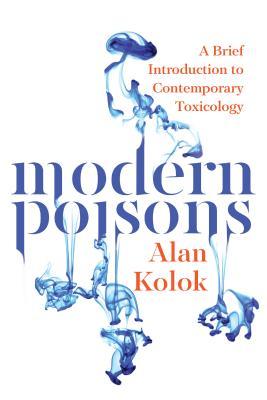From snake bites to epigenetics, the field of toxicology is integral to understanding and improving public health and environmental science. Toxicology is the study of how chemicals affect living organisms, and lives at the intersection of chemistry and biology. If that scares you, do not fear. Dr. Kolok explanations of basic chemistry and biology are extremely accessible. Interspersed between the abstract scientific principles are fantastic real-world examples that bring the topics to immediate relevance. Some of my favorites include —
- Napoleon always thought he would be poisoned by the English, and arsenic in sequestered in his hair seemed to validate his theory. But as it turns out, his green bathroom wallpaper did him in. Sheele’s green (copper arsenite) is converted to trimethylarsine gas by molds.
- All chemical compounds can be divided into two categories: water soluble or not. Compounds that do not dissolve in water are called lipophilic, and this trait determines what crosses the blood-brain barrier. Lipophilic drugs like alcohol, caffeine, nicotine, heroin, methamphetamine, and cocaine travel through the blood stream and enter the brain quickly and efficiently. Most pharmaceutical drugs are water-soluble, and pose a challenge to therapeutic drug delivery.
- The body has some defenses against lipophic drugs, including biotransformation. Unfortunately, in the case of acetominophen, the body converts the Tylenol active ingredient into a highly toxic metabolite for a short time before converted again into the excretable form. However, the second conversion sometimes fails or slows, as in a Tylenol overdose or in the case of Tylenol combined with alcohol.
- During the 1700s, boys employed as chimney sweeps on bathed a couple of times a year, despite being covered in sweat and soot, which would collect in their groin, developing into “soot-wart” and testicular cancer. This example is famously known as the first occupational hazard.
Modern Poisons is not meant to replace a toxicology textbook, but provides the groundwork necessary for the average person to understand current agency standards for chemical limits, including organochlorine pesticides that bio-concentrate up the food chain, the saccharine in your diet cola, or the personal care products (PCPPs) that are affecting the sex morphology of wildlife.
Recommended as an introduction and survey to modern applicable toxicology!
Thanks to Netgalley and and Island Press for a free copy in exchange for an honest review!
